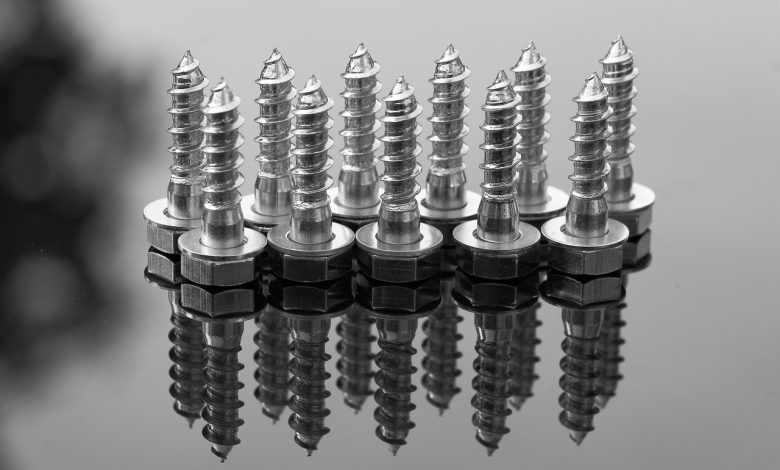Best And Prominent Materials For Making Quality Springs

Springs are mechanical devices that allow you to pull, push, support, lift, or protect yourself. In the design of some of the most common mechanical assemblies, springs are useful. Spring-loaded devices range from automatic doors to ballpoint pens.
A typical spring is a tightly wound metal coil or spiral that stretches when pulled (apply a force). When you let it go or forcefully remove it, it returns to its original shape. A spring, in other words, is elastic. Spring can also work in the opposite direction, it depends on its manufacturing. When you squeeze it, it compresses but returns to its original length when you release the pushing force.
Working on a mechanical spring
Stretching the material in its original state involves pulling atoms out of their positions in the metal’s crystal lattice. That’s not easy to accomplish. Making a spring requires a little more effort to bend the metal into shape, but it’s not nearly as difficult.
It’s simple to change the shape of the spring after its formation. The more metal windings a spring has, the easier it is to stretch or squeeze. A spiral spring can stretch or squeeze a surprising amount simply by shifting each atom by a small amount.
Springs are excellent at storing and absorbing energy. When you stretch a spring with a pushing or pulling force over a distance, you’re doing work and using energy, according to physics. It is more difficult to deform a spring that is tighter. As a result, the more work you have to do, the more energy you will require.
Types of springs used for different purposes
Spring is a common product in our daily lives, such as pens, automobiles, mechanical devices, and medical devices. To restore elasticity, it is made of a material with very high yield strength. Here are some examples of common spring types used in various applications.
-
Helical springs
The most common type of spring used in product manufacturing is the helical spring. The most common application for this helical spring is to handle compressive and tensile loads. There are four major categories of helical springs, which are as follows:
- Compression springs: When the load presses or squeezes the helical coil, compression springs resist compressive or push force. As the load increases during actuation, the distance between the coils narrows. This continues until the spring reaches its compressed length, at which point the coils come together.
- Tension spring: it is the polar opposite of a compression spring and is typically attached with a
U-shaped or I-shaped hook at one end or both ends. These, like compression springs, come in a variety of sizes, spring rates, and spring materials. It is dependent on the amount of force required for the specific application.
-
- Torsion springs are helical or spiral springs that can either exert or resist torque loads. The load causes these springs to wind up. Circuit breakers frequently employ this torsion spring. Torque rating at a known position is a crucial factor during selection, in addition to standard metrics. It includes spring rates, spring end types, diameters, and materials.
- Constant force spring or spiral spring: Clocks and wind-up toys use spiral torsion springs. They’re steel bands that look like rolls of tape. When you apply a load, the tape stretches, and the inherent stress resists the loading force at a constant rate.
-
Leaf springs
A popular and traditional type of spring is the leaf spring. It applies to the automobile industry or vehicles. Bolts and clamps hold metal plates of varying lengths together. Chrome vanadium steel, Silicomanganese steel, and carbon steel are the materials used to make leaf springs.
-
Disc springs
Disc springs, or disc washers or spring washers, are ideal for high-load applications in small spaces. The conical disc consists of a convex disc with the outside edge working against the center of the disc. In a small moving region, this produces a massive spring force.
Because of their disc configuration, disc springs can generally carry higher loads with less deflection and solid height than conventional helical spring designs. These are extremely helpful in a wide range of manufacturing and work-holding applications.
-
Air springs
For more than a century, air springs have been an integral part of heavy-duty applications, particularly suspension systems. An air spring is simply a column of air enclosed in a bellows-shaped rubber-and-fabric container. The spring motion is caused by the compression and expansion of air. Using air springs on the road can keep a vehicle at a constant standing height regardless of load.
3 major materials for making springs
Having the proper spring material is therefore critical in the manufacturing of a product. It will meet the stringent requirements of your project and the industry while standing the test of time. The following are some of the best materials for making springs:
-
Stainless steel
This is a common spring material that is ideal for applications requiring increased corrosion or heat resistance. This steel alloy contains a minimum of 10.5 percent chromium and a maximum of 1.2 percent carbon. There are several grades of stainless steel. Austenitic, martensitic, and precipitation hardening steels all have their own properties and types.
This is a very popular and versatile spring alloy that is used in a wide range of markets and industries. Architecture, art, aerospace, chemical processing, food, and transportation are just a few examples.
-
High carbon steels
This alloy is also highly common in the production of springs. Carbon steels can contain up to 2.1 percent carbon; the higher this percentage, the stronger the alloy. High carbon steels are less ductile and brittle than other metals. As a result, they will not be suitable for environments where flexibility is essential.
-
Nickel alloys
Nickel is a versatile metal that will alloy with a wide range of other metals. It’s ideal for a variety of applications requiring corrosion resistance and high temperatures. Nickel alloys are also strong and long-lasting, and they are dependable. It retains its strength even in the harshest environments, such as chemical plants or oil rigs.
Conclusion
In short, the key point of this post is to explain the types of springs and the primary materials for making high-quality springs. There are springs everywhere. Engineering, automotive, aerospace, and retail are just a few of the industries that use them. There are various types of springs that serve various purposes. The above types are some common ones. There are other types of springs besides the ones listed above. Flat spring, Variable Force Spring, machined spring, and others are examples. Materials play an important role in the manufacture and design of springs. The above materials are excellent for making springs. A spring manufacturer will truly know all the knowledge of the springs.




